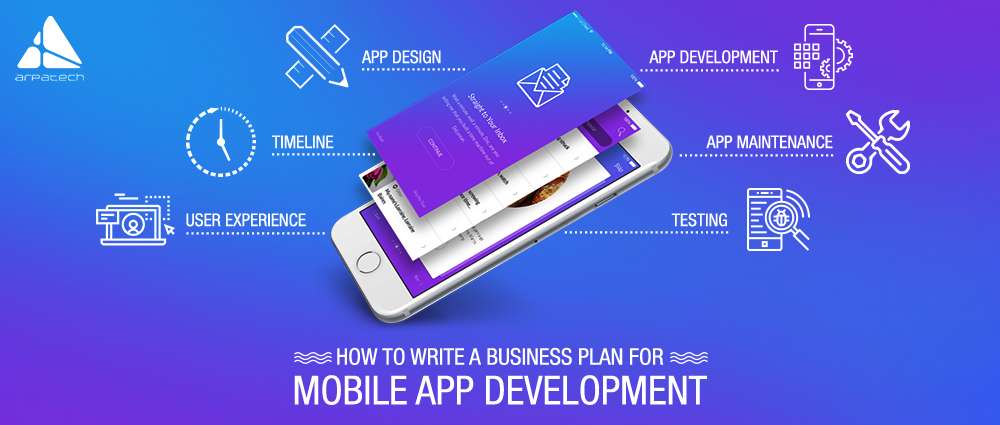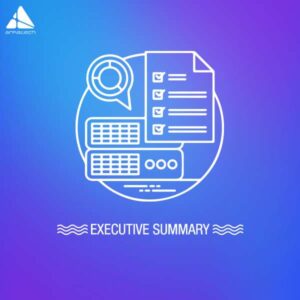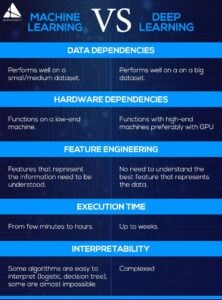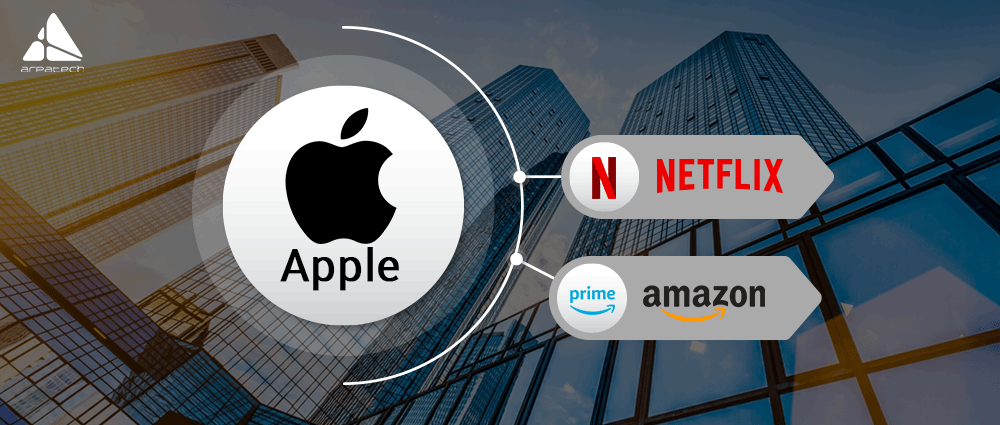Latest Blogs
Software Development
Ramsha Khan
Dec 11, 2025

Successful YouTube Campaigns that Will Help Your Startu...
Video marketing has become a dependable medium for getting people’s attention and getting your business message across for quite a while now. And as 2019 continues to unfold, more and more data is signaling its continued development and importance. About two-thirds of business owners are planning to create at least three marketing videos this year. Not surprisingly, almost all (87 percent) of those who have earlier invested in video marketing is happy with their ROI.
In order to appeal to the new generation of customers, brands must actively look for creative notions to attract them or hire an expert digital marketing agency. In the face of mounting competition, how do you create your own identity in the ocean of competitors? It seems that the solution lies in video marketing. Let’s figure out how.
Videos have become a tool that carries a variety of marketing and business goals i.e. customer retention, customer support, customer experience, sales, etc. Although for some brands it is very challenging to find the ROI of their videos however that’s also changing. Across the board, businesses use video to serve four main objectives:
We are going to discuss such successful video campaigns of real companies seeing results.
Google Android has introduced a new advertising campaign about unlikely animal relationships. Dogs and dolphins swimming, elephants and sheep playing, and even a duck and a kitten snuggling are among the cute displays. Since cute animals have always been a trend online, this makes it a great advertisement alone. But Good has more to offer.
At the end of these simple, cute pairings, Google brings to mind us that we need to be together, but we don’t need to be the same. This advertising campaign offers us a glimpse of how strong emotional marketing techniques can be if you add happiness to the mix! Besides happiness, there is a great deal of strength behind the human association and the promotion of unity in a globe that seems so divided.
https://www.youtube.com/watch?v=XjJQBjWYDTs&feature=youtu.be
‘Like a Girl’ is an award-winning campaign which won Emmy, Cannes Grand Prix award, and the Grand Clio award. Always embarked on a mission to address the social issues that women face during puberty and took it up to appeal to younger audiences. This line implied that women were weaker, ditzy and unable to be powerfully independent. The primary aim of the video was for people to communicate and engage. Building on the concept of the word ‘Like A Girl’ as an offensive word, Always took on the challenge of changing people’s perceptions. The video comprises of engaging youth and sharing their opinions on what ‘ Like A Girl ‘ meant to them. By embracing a familiar sentence that we use every day, it has always been linked to the masses and has triggered a wave of social change.
People in the United States want and seek the truth as though it is being torn apart, polarized and deceived as never before. In such a time, the New York Times advertising campaign truly validating people’s fears of the truth of the world and is still trying to calm them down. This advertisement reveals media of today as challenging it is to find honesty in their media. In a world where media is all bribe and sold for money, the New York Times used their advertisements to prove their commitment to transparency and honesty. This is a strong message for people who are tired of lies, negativity and want the truth. The Truth is Hard is offering a beautiful human link, which sincerely speaks to a globe that wishes clarity.
Amazon introduces its first-ever Echo Spot Device while pulling your and your family’s heartstrings showing how this technology can help connect families. In this ad, an old lonely grandma is shown. Her life was transformed by the insertion of the smart device into her home. Her gift is packed with the instructions “Just ask: ‘Alexa, Call Home.’” The home assistant does just that and the grandma is greeted by her full family on the screen. This message does not only promote their product but also helps us in self-reflecting our selves and our relationship with our grandparents and we might give them a call if it’s been a long time. Amazon not only inspires audiences but this demonstrates their willingness to target elderly individuals and help improve their lives, which also inspires us to be more faithful to the “good-doing” business.
Facebook has been through a bad phase with the violation of personal data leaks and privacy protection. A lot of time unfortunate things happen and companies apologize for that. So, Facebook thought of apologizing through an advertising campaign to send a strong message. They conveyed this message in the advertisement “committed to doing more to keep you safe and protect your privacy so that we can all get back to what made Facebook good in the first place: friends. Because when this place does what it was built for, we all get a little closer.” The audience does get offended if a brand makes mistakes but they get furious if they don’t see any apologies or encounter any improvement. It is the responsibility of a business to relieve the stress and worries of customers about using a product or service.
Trust is essential, and with this video, Facebook shares its dedication and vision to how and what they want their platform to be. Safe, connected and human.
This video directs the audience through moms supporting their children with their dreams and circumstances — whether it’s color prejudice, religion, disability or sexual orientation. Procter & Gamble’s “Thank You Mom” has had a wonderful time being shuffled in the previous few Olympic publicity campaigns. This video encourages the sentiments and achievements of the Olympic athletes and the sacrifices of their support teams, including their mothers.
This video encourages the sentiments and achievements of the Olympic athletes and the sacrifices of their support teams, including their mothers. Like a fair number of people who have had to sacrifice and pass through a lot of dreams, this tale resonates not only with the accomplished individual but also with the emotions of the support system. Moms, relatives, friends, and family can all be connected with the feeling of being supported and being the supporter. This ad campaign is a success since human love and sacrifice are two feelings that individuals can always relate to.
https://www.youtube.com/watch?v=XpaOjMXyJGk&feature=youtu.be
This ad revolves around an artist who loves drawing portraits of women without seeing and completely through verbal descriptions by the women themselves or by someone else. With growing expectations of unachievable beauty criteria, Dove took a perceptive stance to tell women to be gentler to themselves. By contrasting how others perceive them as opposed to how people perceived themselves, they efficiently communicated the message. This famous campaign was run in 25 different languages and showcased in over 110 countries.
The point to make here is Dove smartly tap on the striking trends and utilize a primary message that has the consumers at the heart of it.
Saima Naz
Aug 24, 2019

Android 10 is the Official Name for Android Q
Tech giant Google disclosed Thursday that it will be dumping the sweet names of its mobile operating system, formerly called Android Q, and will simply be replaced by Android 10.
Sameer Samat, vice president of product management for Android, wrote in a blog post. “As a global operating system, it’s important that these names are clear and relatable for everyone in the world. So, this next release of Android will simply use the version number and be called Android 10.” “We think this change helps make release names simpler and more intuitive for our global community.”
As part of this novel idea, Google is also updating its Android logo, opting for a “more modern, accessible look.”
It’s not yet clear when the new software will be available, but the new logo will be pushed out in the “coming weeks with the final release of Android 10.”
The company has had a tradition of naming its phones after something sweet, such as Pie, Oreo, Nougat, and Marshmallow.
In March, the tech behemoth issued the first and showed more features at its yearly I/O developer conference in May.
One of the company’s important selling points for Android 10 is a new tactic to keeping personal information isolated. The new confidentiality features come in the form of more coarse location controls and a devoted privacy section in the settings app.
Android 10 will also support foldable screens, quicker app unveilings and full-on gesture navigation.
A host of organizations have been working with Google through the beta process to ready their devices for the new update. As well as Google’s line of Pixel phones, OnePlus (6 through 7 Pro), LG (G8) and Huawei (Mate 20 Pro) are among the many organizations with devices already certified for the 10 beta program.
Saima Naz
Aug 23, 2019

Top Social Media Marketing Tips to Revamp Your Marketin...
Social media marketing offers business activities on social media platforms which can help businesses in attaining objectives in terms of brand awareness, website traffic as well as customer acquisition. This marketing is done through content in the form of videos, images, texts, community engagement and paid ads.
Digital marketing is an ever-evolving landscape and there’s always a room for improvement. There’s no sure shot experimented formula for any successful marketing strategy because of the constantly evolving nature of this field. Too many businesses go into social media marketing on an ad hoc basis. Businesses need to plan a strategy which they should be able to operate in a thoughtful and tested way. In case if you don’t, you may lag behind in the race of your competitors.
Below we are going to share some super social media marketing tips in order to make you win out over your competitors. Let’s begin!
Every social media platform offers different strategies. For instance, Twitter is best for word play for your business where you get to interact via retweets while Instagram promotes your products through beautiful images.
Make sure your marketing strategy should depict your brand’s purpose on all social media platforms in the right way. Here is a breakdown of what some of the major social media platforms have to offer.
The posting times play a vital role in capturing the audience. So, you must do proper research and find out when your audience is most active on social media so you can post content when it is the ideal time for your brand and ensure the utmost level of engagement. After doing some research, we have identified the top days and posting times on social media.
Although, these are the prime times for posting. Do a little research on your own audience and see when they are most active. Joining these observations will allow you to identify accurately when your brand should be posting on each platform to assure that you interact with your target audience.
Going live on social networks has become a powerful tool Whether it’s Facebook, YouTube, Instagram, etc. It is rapidly gaining ground in the world of internet and social media marketing. You can go live anytime showing your business goods, or yourself in real-time and gain their trust. You may also take this opportunity to introduce a new product, run a Q&A, or share behind the scenes going on at your business! Incorporating a live streaming video strategy into your content campaigns is one of the finest social media marketing tips on can offer.
When was the last time you looked for reviews before you wanted to shop something and be sure about it? That’s exactly what happens with others. Online reviews are pivotal for any brand. People believe in the word of mouth more than anything. So, ask your bona fide customers to leave positive reviews. Or you may also incentivize the new customers on leaving reviews. It is one of the best ways to give business more customers.
Facebook Messenger marketing is a new kind of email marketing. It has over a million monthly users which makes it a great tool for connecting with millions of existing and future customers. Smart brands are already enjoying its benefits. Furthermore, chatbots are a great help. They provide customers the prospect to get answers and/or interact instantly with the brand which makes feels very satisfied. Chatbots are the best assistants for businesses.
More than anything, visuals are catchy to the eyes. With the platform targeting to become a genuine hub for video streaming, its focus on video will only expand in 2019. Videos cater to the attention of users and keep them engaged. No matter the budget and resources, several things can be done to make video content attractive: whether it’s professionally filmed in the studio, deliberately informal on the mobile, stop motion or animation – it can work for businesses.
Most importantly, Facebook video is the best source of content that will boost your brand and align you on your way to success.
This is the bandwagon you should rightly jump on. People these days are following influencers and consider their say in business or products. Influencer marketing is basically word of mouth of people who have a position in a certain niche, people follow them and form an opinion about a business or product depending on their review/opinion. They could be anyone from celebrities, Instagram users with a huge following and YouTube stars to well-known bloggers who help spread the word about your business or product through their social channels. Working with influencers will ramp up your visibility, strengthen the trust and recognition of your brand, help you generate leads and increase your revenue. Influencer marketing has a great ROI when performed intelligently and I suggest that you start focusing on the influencers as soon as possible. It is the kind of social media marketing one shouldn’t miss out.
Pinterest is among the most famous social platform which ranks as the third most popular social medium. Also, it is considered as the second most substantial search engine after Google in terms of visual search. Furthermore, it has the capacity to maximize ROI, website traffic as well as credibility and authority in your niche. Thence, don’t neglect it.
Saima Naz
Aug 23, 2019

How to Write a Business Plan for Mobile App Development
We are living in the modern world where it is hard to find someone without a smartphone without any mobile applications installed. It has become a necessity for reaching people. And as long as smartphones/tabs are growing in numbers, there is no doubt that the mobile app industry will continue to boom its revenue and bring jobs for people.
So, to start up an app business you need to write down a business plan which is a very crucial element in the app development process. Below we have sketched what you actually need to include in your business plan before launching a mobile application.
Business Plan Template

The first and most important part of your business plan is the executive summary. It is the first things that get a read by the investors. It’s a crucial part of your business plan template which should be clear and concise; also, remember less is more here.
A problem is a complexity that a consumer is facing which has not been addressed or not rightly tackled yet. Also, it should also depict that this complexity or problems impact people enough and hence how this shortcoming or complexity needs to cope up.
It is referred here as the solution to the complexity that is faced. You need to introduce how your app is the best solution to the problems faced by the consumers. Explain enthusiastically why your app is the potential solution for companies or people and how it addresses the problem faced.
A unique value proposition makes you stand out of the crowd. It differentiates your business from competitors in the market. And using unique value proposition means your it shouldn’t be common and be the only entity in the world that can claim it. And very precisely, for being the best among all you need to invest your time, money and some good resources which others may lack.
Make sure your goal aligns with the solution you provided. It is what investors need to know and you need to explain what success looks like. Consider explaining your success definition, time frame and your exit plan in the goals section.

For any app to work, the team plays a significant role. And for investors, the company section of your business plan is the most important you need to explain the history of your company where you briefly need to explain the brief about the idea that motivated you to start the business. Also, the expert management and advisory team you got in the house. This is why accelerators like Y-Combinator base most of their decisions on the founding team and company potential.

The marketing plan isn’t consistent and iterates during the initial years as per requirement. Investors seek for such a marketing plan that will persuade users/customers to get their hands-on product/service.
Under this heading, you have to jot down your basic strategies that will help in customer acquisition. Mention each approach and tactic you’ve planned for acquiring customers. Explain thoroughly how much it will cost to acquire one customer (CAC) from each channel but make sure to give a realistic expectation. Try to be specific and quantitative. This is what an investor is looking for at this stage.
It is imperative to build a referral program into your app to leverage network effects if you are looking for a business model that requires a great mainstream user base. Uber app is one such success with which you get a coupon for the next ride you are going to take. Moreover, your friends also get the coupon for taking their first rides with Uber.
It’s simple for startup founders to rely on “vanity metrics” or metrics that make it look like you’re doing good enough, but in fact, you’re not on the road to sustainable business. Therefore, you need to pick one or two metrics that you plan on focusing on that matter specifically for your business. For instance, if you’re a social app, active users on a regular basis may be more crucial than your full number of downloads.

After all the other sections of the business plan has been read by the investor, you must show them what kind of investments you’ll be needing for your app. So, you must know what and how much finances you need meanwhile you must inform the investor where their money is going. The financial model generally involves a three-to-five-year forecast of all major forecast models, including profit and loss, money flow, balance sheets, start tables, and valuation.
Here are some of the ways to monetize an app:
Whoever is investing must know what everything is going to cost and what are the variables. Depending on the complexity of the app’s features and developer’s rates, the cost of app design and development varies greatly. However, some prices remain constant for instance, subscriptions salaries, office rent, etc. while the others are going to increase as your business scales, e.g. server space. Make your price predictions on your revenue so that the investor can see how the business should grow over time, and ultimately begin registering a profit.
The final part is the integral one since it is the stage where you will ask for the funding you need. You must be well informed enough to sketch how much time and funding is needed to attain profitability. This is the amount you ask for and in return, you justify what you are giving. work on how long it will take to bootstrap until profitability – once you’ve got an app to launch.
Saima Naz
Aug 23, 2019

Google Rolls Out Its Search App ‘Google Go’
Tech giant Google has come up with its flagship app, Google Go’, which is on had to users all over the globe. Earlier, the search app was only available in a handful of countries where most of the users use low-spec Android phones.
Optimized to run swiftly on low-spec Android phones, Google Go also performs highly effectively in places where wireless connections tend to be slow or uneven.
Well aware of the fact that a large number of people can also take advantage of a lightweight Google app, Google has decided to unveil the app to all Android users:
“Millions of people have already used Google Go to find information on the web and make sense of the world around them. But we know that people everywhere can sometimes struggle with spotty connections, phone storage, and reading or translating text.”
The app offers some cutting-edge features such as the capacity to read out content loud, besides using less memory, less storage, and working well with blotchy internet connections.
The app can also read web pages in as many as 28 languages, even on slower connections like 2G, besides reading content taken in pictures with Google Lens.
The feature uses artificial intelligence to ascertain which parts of a page to read and which to omit, obviating the need to read things like text ads in between paragraphs.
Just like a podcast, users can also listen to the audio on its own, or follow on the screen as words get underlined while they’re read out loud.
And whenever the connection gets disrupted, Google Go will remember your location and recover the last set of search results once the connection is restored.
The search app is available now on the Play Store for Android devices.
Saima Naz
Aug 21, 2019

How Deep Learning and Machine Learning are Different
Machine Learning and deep learning have gained a lot of popularity in recent years. Both are the subsets of artificial intelligence. Often, both the terms have been seen using interchangeably but both have a lot of differences. Examples of machine learning and deep learning are all around. It’s how Netflix understands which show you’re going to watch next, how Facebook recognizes whose face is in a picture, what makes self-driving cars a reality and a lot more.
So, let us start with the basic enlightenment of both the terms
So, AI is an all-encompassing term that originally erupted, followed by ML that thrived later, and finally, DL that is promising to scale AI’s progress to another level.
Machine learning is the best tool to analyze, comprehend and recognize data patterns so far. The main idea behind ML is that a computer is trained in a way to automate duties that are exhausting or complex to humans. It takes decisions with minimal human interference. Machine learning incorporates data to deliver an algorithm which can comprehend the connection between input and output. When the machine has fulfilled the learning, the value or class of the new data point can be predicted.
On the other hand, deep learning uses different layers to learn from data. It is also often called machine learning as it copies the network of neurons in a brain. The learning phase in deep learning is completed through a neural network which is an architecture in which layers are piled on top of each other.
Since you have understood the basic definition of machine learning and deep learning, let us now dig deep into the differences between both of them.

We will start off with the major difference between the two algorithms which is the ‘performance’. Deep learning algorithms require a huge amount of data to understand completely hence if the data is small DL algorithms do not work rightly. While in machine learning their handcrafted rules prevail in this setting.
Among both the algorithms, deep learning severely depends on high-end machines as compared to traditional machine learning which can swiftly work on low-end machines. Consequently, deep learning requirement comprises GPUs which is a fundamental part of its working. Comparatively, Deep learning algorithms do a large amount of matrix multiplication operations. All of these operations can be proficiently optimized by means of a GPU because it is made for this purpose.
Feature Engineering is a method of placing domain knowledge into the development of feature extractors to lessen data complexity and make patterns more visible for learning algorithms to function. This method is tricky and costly in terms of time and expertise. In machine learning, most of the characteristics used need to be recognized by the specialist and then hand-coded as per domain and data type. While deep learning algorithms try to learn high-level features from data. This is a very unique component of deep learning and a significant step forward in traditional machine learning. Deep learning thus minimizes the task of developing a new feature extractor for every problem.
The traditional machine learning algorithm is generally needed to break a problem into different parts to solve them individually and combine them to get the result. In contrast, deep learning backs to solve the problem end-to-end, such as logistic issues. Let’s further explain it with an example.
You are asked to detect multiple objects. In this task, we need to specify what the object is and where it is present in the picture. So, in the machine learning algorithm, this problem gets to divide into object detection and object recognition. First of all, we use the grabcut algorithm to skim through the picture and discover all possible items. Then, of all recognized objects, you would use an object recognition algorithm such as SVM with HOG to identify applicable objects. On the contrary, deep learning algorithm would perform the whole process end-to-end.
Deep Learning usually requires more time to train compared to machine learning. Because of the fact that there are so many parameters in a deep learning algorithm. On the other side, machine learning requires a lot less time to train, from a few seconds to a few hours.
But if we talk about testing time, the turn is completely opposite. The deep learning algorithm requires a lot less time to operate. Whereas, if you compare it with the nearest neighbors (a type of machine learning algorithm), the test time improves by increasing the size of the data.
Interpretability is the main factor deep learning is still thought 10 times before its use in industry. For instance, an automated marking of a test is done. The scoring done is accurate and quite human-like. But it does not explain why such marks or score were given. You can find out later which nodes of the neural network were activated, but we don’t understand what the neurons were intended to model and what these layers of neurons were doing together anyway. So, we fail to interpret the results.
While in machine learning algorithms such as decision trees offer us all the details we look for as to why it chose what has been marked. so, it is particularly simple to interpret the reasoning behind them. Therefore, algorithms such as decision trees and linear/logistic regression are mainly used for interpretability in the industry.
Saima Naz
Aug 21, 2019

Apple Allegedly Boosts TV Outlay by $5 Billion
A new report by the Financial Times alleges that tech giant Apple has committed a staggering $5 billion dollars more to its original video content budget in an effort to effectively vie with Amazon, Disney, HBO, Netflix, and Hulu.
The company had initially earmarked $1 billion for former Sony Pictures Television officials Jamie Erlicht and Zack Van Amburg to invite renowned creators and Hollywood stars to its platform. According to the publication, that number has risen to $6 billion as more shows have moved through production and budgets have swollen.
The FT says that one production has cost Apple hundreds of millions of dollars, while separately Apple is reported to be spending $300 million on just the first two seasons of the show.
Apple’s inclination to instantly match what Netflix was spending yearly on original content only a few years ago shows how intense the streaming wars are set to become in the coming months and years.
Apple’s TV Plus service mounts this autumn, secured by a set of other programming with big names like Oprah Winfrey and Steven Spielberg. The company’s services chief Eddy Cue has said the tech behemoth plans to add new content at a slower pace than its soon-to-be competitors, with a prioritization on quality over quantity.
Nevertheless, Apple will be going up against not just current streaming titans, but also novices like Disney. In 2020, there will also be WarnerMedia’s new HBO Max to deal with, a new streaming service that is likely to mix live TV, including news and sports, and a wider variety of content from across every WarnerMedia property with all of HBO’s current offerings.
In the meantime, Amazon, Disney, and Netflix are spending staggering amounts of money to vie with one another.
Saima Naz
Aug 20, 2019